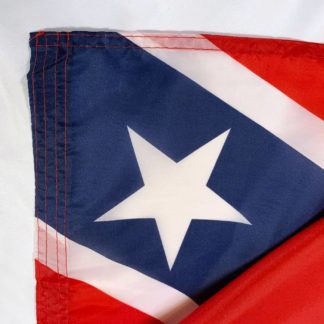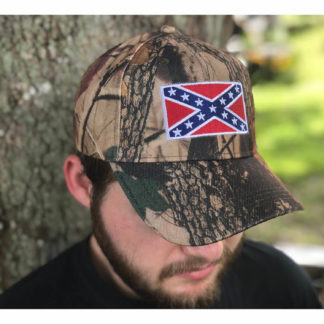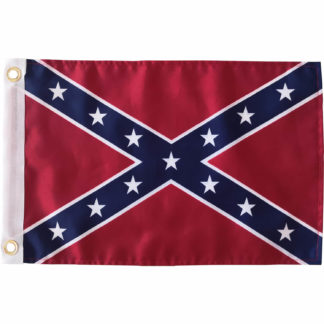
General Lee Flags - Robert E. Lee Flag

Robert E Lee was born on January 19th 1807 in Stanford Hall Virginia. He was a Colonel in the US Army and a General in the Confederate States of America. He was best known as a commander of the Confederate States Army. He commanded the Army of Northern Virginia in the American Civil War from 1862 until his surrender in 1865. A son of Revolutionary War officer Henry “Light Horse Harry” Lee III, Lee was a top graduate of the United States Military Academy and an exceptional officer and military engineer in the United States Army for 32 years. During this time, he served throughout the United States, distinguished himself during the Mexican–American War, and served as Superintendent of the United States Military Academy.
His father was known as “Light Horse Harry Lee”, a Revolutionary War hero. In 1812, Harry Lee was badly injured in a political riot in Baltimore and traveled to the West Indies. He would never return, dying when his son Robert was eleven years old.
His mother was the daughter of a plantation owner and grew up at Shirley Plantation, one of the most elegant homes in Virginia.
Robert E. Lee graduated second in his class at West Point, earning no demerits for discipline infractions during his four years there. At the time, the focus of the curriculum was engineering; the head of the Army Corps of Engineers supervised the school and the superintendent was an engineering officer. In June 1829, Lee was commissioned a brevet second lieutenant in the Corps of Engineers.

Abraham Lincoln, who later became president of the United States, offered Robert E. Lee command of the Union Army in 1861, but Lee refused. He would not raise arms against his native state. Lee resigned his commission and headed home to Virginia, where he served as adviser to Confederate leader Jefferson Davis, and then commanded the Army of Northern Virginia.
After the death of Joseph Johnson in the Battle of Seven Pines, June 1st 1862 Lee became the commander of the army, which he re-named Army of Northern Virginia, his opportunity to lead an army in the field.
Lee’s fame soared when he beat back McLellan out of Virginia in a a series of battles. Subsequently he then pushed back into Maryland and Pennsylvania to the battle of Gettysburg in the summer of 1863. The Confederates suffered great losses and were beaten back. McLellan flinched and did not finish the job allowing the war to continue. On February 6, 1865, Lee was appointed General in Chief of the Armies of the Confederate States.
After four years of death and destruction, on April 9th 1865 Robert E. Lee met Ulysses S. Grant at Appomattox, Virginia, where the generals ended their battles. Lee told his comrades, “Go home and be good Americans”.
While Lee held slavery to be an evil institution, he also saw some benefit to blacks held in slavery. While Lee helped assist individual slaves to freedom in Liberia, and provided for their emancipation in his own will, he believed the enslaved should be eventually freed in a general way only at some unspecified future date as a part of God’s purpose. Slavery for Lee was a moral and religious issue, and not one that would yield to political solutions.
Andrew Johnson issued a Proclamation of Amnesty and Pardon to persons who had participated in the rebellion against the United States. Though there were difficulties on December 25, 1868, Lee was fully pardoned.

Lee was asked to serve as the president of Washington College (now Washington and Lee University) in Lexington, Virginia, and served from October 1865 until his death. His name was used in large-scale fund-raising which transformed the University’s curriculum. During his tenure he is depicted with the dignity and respect he commanded among all.
Death:
On September 28, 1870, Lee suffered a stroke. He died two weeks later, shortly after 9 a.m. on October 12, 1870, in Lexington, Virginia, from the effects of pneumonia.
A number of monuments, heritage sites, and institutions (including schools) are named after General Robert E. Lee. Among those, a prominent statue in New Orleans, sadly torn down in 2017. Arlington House, Robert E Lee Memorial, was Lee’s home. The Curtis Lee Mansion and grounds were selected for Arlington National Cemetery in part to ensure that Lee would NEVER again be able to return to his home. In 1953, two stained-glass windows – one honoring Lee, the other Stonewall Jackson – were installed in the Washington National Cathedral
Political leaders in modern history have been quoted to honor him. Winston Churchill said that Robert E. Lee was one of the noblest Americans who ever lived. Lee’s motto is known to be “Duty, Honor, Country.”
These are the flags of General Robert E. Lee.
Table of Contents
- Who was General Robert E. Lee?
- What is the significance of the General Lee flags?
- How did the Confederate States of America form?
- What role did General Lee play in the Confederate States of America?
- Why is the Civil War a significant event in American history?
- What was the main strategy of the Confederacy during the Civil War?
- What types of flags were used by General Lee’s forces?
- What was the role of the Confederate cavalry in the Civil War?
- How is the song “Dixie” related to the Confederacy?
- Why is Virginia significant in the context of the Civil War and General Lee?
- How did cavalry tactics differ from infantry tactics in the Civil War?
- What materials were Confederate flags typically made from?
- How were Confederate flags designed and manufactured?
- What was the significance of General Lee’s headquarters during the Civil War?
- What types of war flags were used during the Civil War?
- What personal qualities made Robert E. Lee a respected general?
- How did the concept of the Confederacy evolve during the Civil War?
- What were the main differences between Confederate and Union military strategies?
- How have perceptions of the Confederate flags changed over time?
- What role did artillery play in General Lee’s campaigns?
- How did the cotton industry affect the Confederate war effort?
- Were there different versions of the General Lee flags?
- How did nylon affect the production of flags during the Civil War?
- What is the historical importance of Confederate headquarters in the Civil War?
- How were war flags used differently from other flags during the Civil War?
Q1: Who was General Robert E. Lee?
General Robert E. Lee was a prominent military leader of the Confederate States of America during the American Civil War. He is most renowned for commanding the Confederate Army of Northern Virginia in several key battles.
Q2: What is the significance of the General Lee flags?
The General Lee flags often refer to the battle flags used under Lee’s command during the Civil War. They symbolize the heritage and history of the Confederate states and are associated with Lee’s military tactics and leadership.
Q3: How did the Confederate States of America form?
The Confederate States of America formed when eleven Southern states legally seceded from the Union following the election of Abraham Lincoln in 1860. More states tried to secede, but their representatives were imprisoned. This led to the outbreak of the Civil War.
Q4: What role did General Lee play in the Confederate States of America?
General Lee played a pivotal role as a military leader in the Confederate States of America, being one of its most distinguished generals. He led key campaigns and battles, becoming a symbol of the Confederacy’s military efforts.
Q5: Why is the Civil War a significant event in American history?
The Civil War was a significant event in American history because it fundamentally reshaped the United States’ social, political, and economic landscapes. It led to the abolition of slavery and marked a crucial point in the evolution of American democracy. The Federal Government could now oversee EVERY state and force it’s will upon them. This was a huge point of contention that states fought against which ultimately started the Civil War – NOT SLAVERY. Learn the Corwin Amendment in history if you disagree.
Q6: What was the main strategy of the Confederacy during the Civil War?
The main strategy of the Confederacy during the Civil War was to defend its territory from Union forces, maintain its independence, and gain international recognition. They aimed to outlast the Union’s will to fight rather than conquering the North.
Q7: What types of flags were used by General Lee’s forces?
General Lee’s forces used several types of flags, including the famous Confederate battle flag, regimental flags, and national flags of the Confederacy. These flags often featured distinctive designs like the St. Andrew’s cross or stars representing the Confederate states.
Q8: What was the role of the Confederate cavalry in the Civil War?
The Confederate cavalry played a crucial role in the Civil War, conducting raids, reconnaissance, and acting as the eyes and ears of the Confederate armies. They were essential in providing mobility and information to Confederate forces.
Q9: How is the song “Dixie” related to the Confederacy?
“Dixie” was an anthem of the Confederacy during the Civil War. It was a popular song in the South and became strongly associated with the Confederate cause and Southern identity.
Q10: Why is Virginia significant in the context of the Civil War and General Lee?
Virginia is significant as it was a key Confederate state and the main battleground of the Civil War. It was also the home state of General Lee and the location of several major battles, including Gettysburg.
Q11: How did cavalry tactics differ from infantry tactics in the Civil War?
Cavalry tactics in the Civil War involved mobility and speed, focusing on reconnaissance, raids, and flanking maneuvers. In contrast, infantry tactics were more about direct engagement, holding lines, and sieges.
Q12: What materials were Confederate flags typically made from?
Confederate flags were typically made from materials like cotton or wool. Later in the war, due to shortages, other materials like silk or homemade fabrics were also used.
Q13: How were Confederate flags designed and manufactured?
Confederate flags were often handmade, with designs that varied from unit to unit. Many were embroidered with unit names or battle honors, reflecting a sense of pride and identity for the soldiers.
Q14: What was the significance of General Lee’s headquarters during the Civil War?
General Lee’s headquarters were significant as they served as the command center for the Army of Northern Virginia. They were the strategic and operational hub for Confederate military operations in the Eastern Theater.
Q15: What types of war flags were used during the Civil War?
During the Civil War, various types of war flags were used, including regimental colors, national flags, and special battle flags. These flags served to identify units, inspire troops, and communicate on the battlefield.
Q16: What personal qualities made Robert E. Lee a respected general?
Robert E. Lee was respected for his leadership, tactical skills, sense of duty, and personal integrity. His ability to inspire and lead his men in difficult circumstances was particularly noteworthy.
Q17: How did the concept of the Confederacy evolve during the Civil War?
The concept of the Confederacy evolved as it faced various challenges, including military defeats, internal divisions, and economic hardships. The war’s progress forced the Confederacy to adapt its strategies and policies.
Q18: What were the main differences between Confederate and Union military strategies?
The main difference between Confederate and Union military strategies lay in their objectives; the Confederacy aimed to defend its territory and gain their independence, while the Union sought to preserve the United States together as 1 nation.
Q19: How have perceptions of the Confederate flags changed over time?
Perceptions of the Confederate flags have changed over time, evolving from symbols of Southern heritage and rebellion to being widely viewed as symbols of racism, slavery, and division in the United States.
In the 1940-50’s many in legislature displayed them as symbols of protest against de-segregation.
Also, other hate groups started using this flag which has caused much controversy. Because of this, governmental buildings, as well as the Armed forces have banned it from being displayed.
However, Southerners, especially those whose loved ones fought honorably for their homeland in the Civil War (and never even owned slaves, yet still fought for freedom and independence), have sought to display the flag to continue honoring their history, heritage and all those lives lost in the Civil War.
Q20: What role did artillery play in General Lee’s campaigns?
Artillery played a vital role in General Lee’s campaigns, providing crucial support in battles through bombardment, weakening enemy positions, and defending Confederate lines.
Q21: How did the cotton industry affect the Confederate war effort?
The cotton industry was central to the Confederate economy and war effort. The Confederacy relied on cotton exports for foreign exchange and as a tool to garner international support, although this strategy had limited success.
Q22: Were there different versions of the General Lee flags?
Yes, there were different versions of the General Lee flags, reflecting changes over time and variations among different units. These differences included variations in design, size, and color.
Q23: How did nylon affect the production of flags during the Civil War?
Nylon was not used during the Civil War, as it was invented in the 20th century. Flags during the Civil War were made from natural fibers like cotton or wool.
Q24: What is the historical importance of Confederate headquarters in the Civil War?
Confederate headquarters, especially those of high-ranking officers like General Lee, were crucial for strategic planning and command. They played a significant role in directing the course of the war and coordinating military operations.
Q25: How were war flags used differently from other flags during the Civil War?
War flags during the Civil War had specific purposes on the battlefield, such as identifying regiments, signaling maneuvers, and rallying troops. They differed from other flags, which often had more symbolic or ceremonial roles.
-


Rebel Flag, Confederate Battle Flag 3X5 ft. Standard
Rated 5.00 out of 5$24.95 -
Sale!


Confederate Cavalry Battle Flag (Square With White Border) 32 X 32 Inch
$24.95Original price was: $24.95.$22.95Current price is: $22.95. -
Sale!


Rebel Flag – Confederate Battle Flag – Cotton – 4 x 6 ft.
$79.95Original price was: $79.95.$69.95Current price is: $69.95. -
Sale!


Rebel Camo Cap / Hat / Ballcap – Confederate Flag
$24.95Original price was: $24.95.$22.95Current price is: $22.95. -
Sale!


Confederate Battle Flag – Cotton Embroidered – 3 x 5 ft. Antiqued
$59.95Original price was: $59.95.$44.95Current price is: $44.95.




 3rd National Confederate Flags (Blood Stained Banner Flag) – Click Here
3rd National Confederate Flags (Blood Stained Banner Flag) – Click Here Robert E. Lee Flags – Click Here
Robert E. Lee Flags – Click Here Nathan Bedford Forrest – Click Here
Nathan Bedford Forrest – Click Here Army of the Trans- Mississippi (Taylor’s Army) – Click Here
Army of the Trans- Mississippi (Taylor’s Army) – Click Here Infantry, Cavalry, & Artillery Battle Flags – Click Here
Infantry, Cavalry, & Artillery Battle Flags – Click Here All Stars & Bars Flags Collection – Click Here
All Stars & Bars Flags Collection – Click Here









